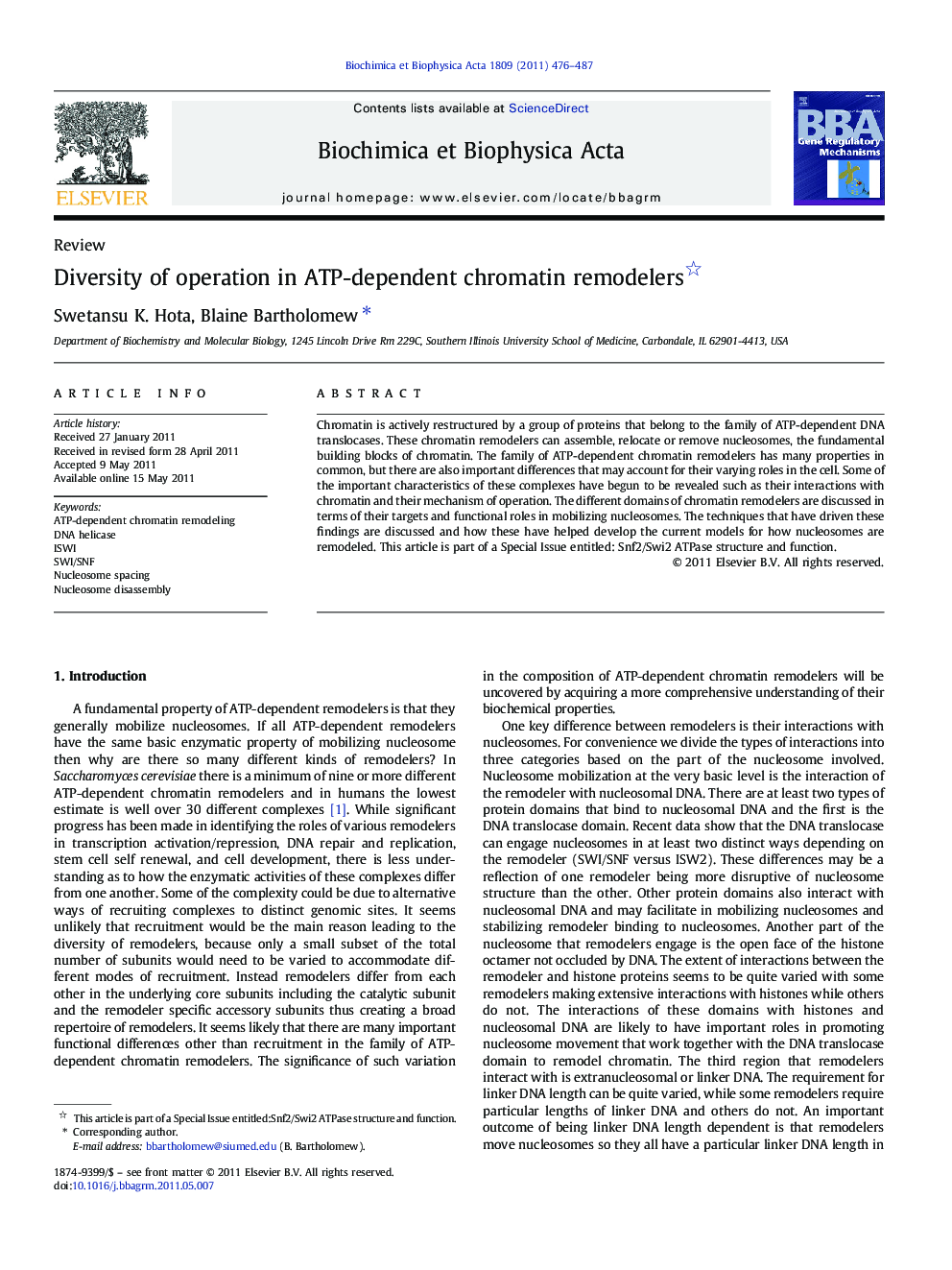| Article ID | Journal | Published Year | Pages | File Type |
|---|---|---|---|---|
| 1946649 | Biochimica et Biophysica Acta (BBA) - Gene Regulatory Mechanisms | 2011 | 12 Pages |
Chromatin is actively restructured by a group of proteins that belong to the family of ATP-dependent DNA translocases. These chromatin remodelers can assemble, relocate or remove nucleosomes, the fundamental building blocks of chromatin. The family of ATP-dependent chromatin remodelers has many properties in common, but there are also important differences that may account for their varying roles in the cell. Some of the important characteristics of these complexes have begun to be revealed such as their interactions with chromatin and their mechanism of operation. The different domains of chromatin remodelers are discussed in terms of their targets and functional roles in mobilizing nucleosomes. The techniques that have driven these findings are discussed and how these have helped develop the current models for how nucleosomes are remodeled. This article is part of a Special Issue entitled: Snf2/Swi2 ATPase structure and function.
Research highlights► There are many different ATP-dependent chromatin remodelers each with their distinctive activity. ► Variations in remodeling activity are tied to how they interact with nucleosomes. ► Binding and remodeling are examined with bulk and single molecule techniques. ► ISWI type remodelers are sensitive to linker DNA length and space nucleosomes. ► The affinity, kinetic, and allosteric models of ISWI may explain how nucleosome spacing occurs. ► SWI/SNF type remodelers remove H2A-H2B dimers and disassemble nucleosomes in arrays.
